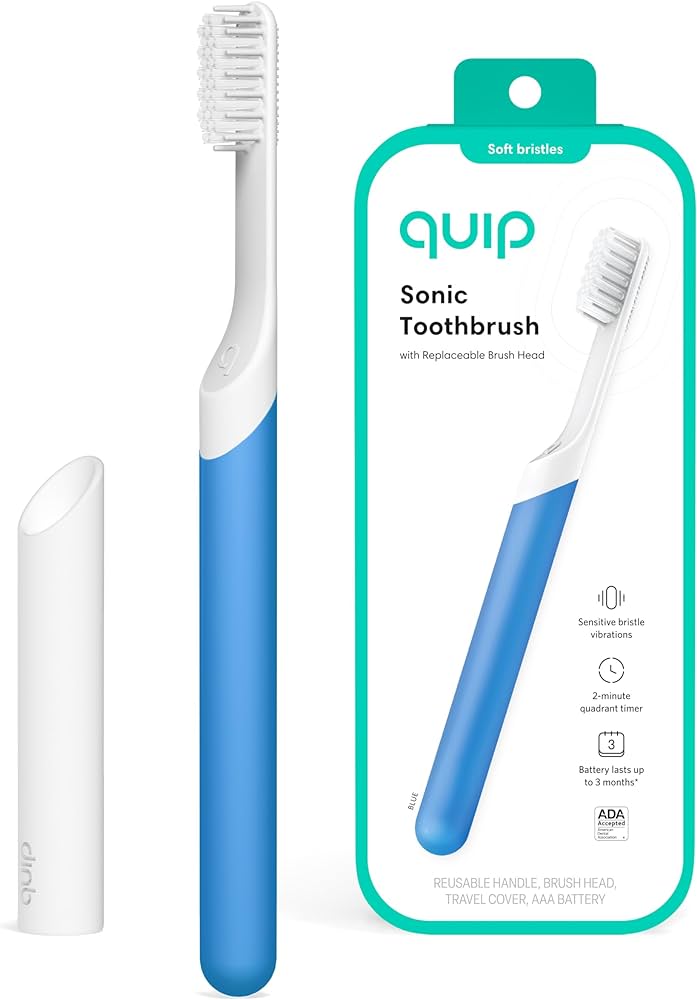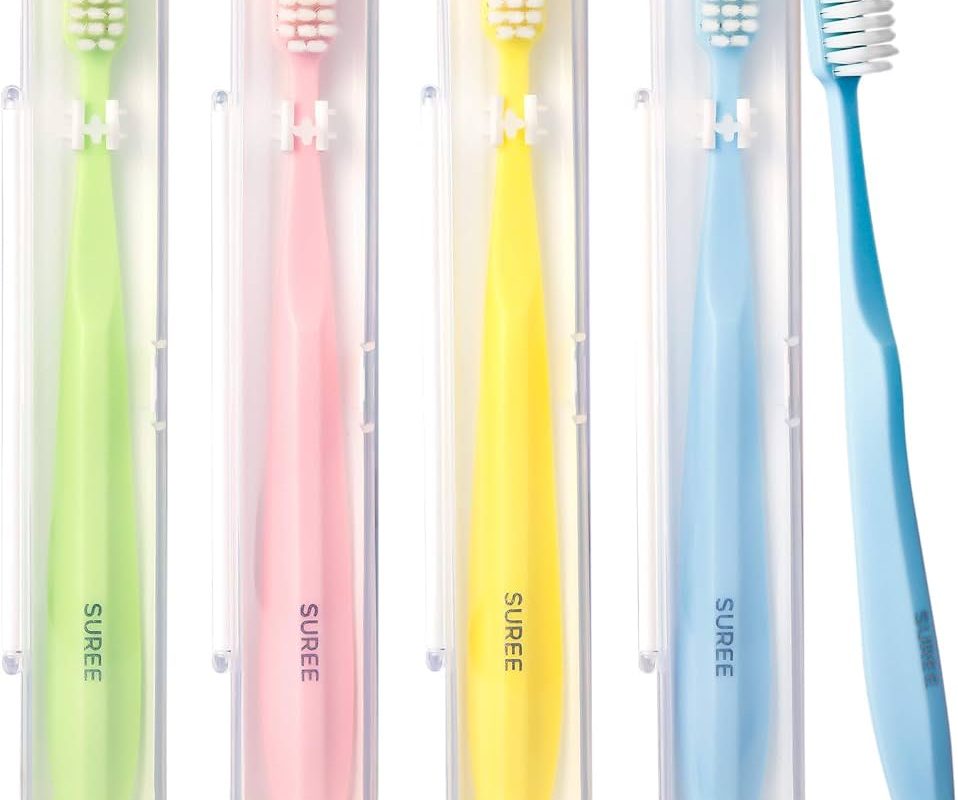Introduction:
Maintaining oral hygiene is crucial for overall health, and your toothbrush plays a pivotal role in this routine. However, noticing an unpleasant smell coming from your toothbrush can be disconcerting and may signal underlying hygiene issues. A smelly toothbrush can be caused by various factors, including improper cleaning, storage practices, and even the type of toothbrush you use. This comprehensive guide explores the potential reasons behind a smelly toothbrush, methods to address the problem, and best practices to keep your toothbrush fresh and clean.

Why Does My Toothbrush Smell?
Improper Cleaning
One of the primary reasons for a smelly toothbrush is inadequate cleaning. Properly cleaning your toothbrush after each use is essential to prevent odor-causing bacteria from accumulating on the bristles.
Rinsing Thoroughly: After brushing, thoroughly rinse the toothbrush head with warm water to remove toothpaste, food particles, and debris. Ensure that all residue is washed away to minimize bacteria growth.
Brushing Residue: Leftover toothpaste and food particles can become trapped in the bristles, providing a breeding ground for bacteria. Over time, this can lead to an unpleasant smell.
Infrequent Deep Cleaning: Periodic deep cleaning of your toothbrush is necessary to tackle any buildup that regular rinsing may miss. Failing to do this may allow bacteria and mold to flourish.
Inadequate Drying
A consistently damp toothbrush can foster the growth of bacteria and mold, leading to unpleasant smells. Ensuring your toothbrush dries properly between uses is crucial for maintaining its cleanliness.
Air Drying: After rinsing, allow your toothbrush to air dry in an upright position. This facilitates drainage and prevents moisture accumulation, reducing the risk of bacterial growth.
Avoid Enclosed Spaces: Do not store your toothbrush in a closed container or cabinet immediately after use. Enclosed spaces can trap moisture, creating an ideal environment for bacteria and mold.
Good Ventilation: Place your toothbrush in a well-ventilated area to promote effective drying. Ensure that the bristles are not in contact with other surfaces, which could retain moisture and harbor bacteria.

Bacterial Growth
Toothbrushes are exposed to an array of bacteria from your mouth, which can multiply if proper care isn’t taken. Such bacterial growth can contribute to foul smells.
Cross-Contamination: Be cautious of cross-contamination from other toothbrushes or household items. Store toothbrushes separately or use a holder with individual slots to prevent bacterial transfer.
Bathroom Environment: Bathrooms are humid environments that can facilitate bacterial growth. Ensure your toothbrush is not stored too close to the toilet to prevent airborne bacteria from contaminating it.
Antibacterial Rinses: Occasionally soak the toothbrush in an antibacterial mouthwash to reduce bacterial load. This practice helps control bacteria and keeps your toothbrush fresher for longer.
Toothpaste Residue
The type of toothpaste you use and how it is applied can impact the cleanliness of your toothbrush. Residual toothpaste can lead to both smell and bacterial growth.
Gel vs. Paste: Gel toothpastes may leave more residue compared to paste formulations. Choose a toothpaste that rinses away easily to minimize the buildup on your toothbrush.
Application Techniques: Apply a small, pea-sized amount of toothpaste to reduce excess residue. Applying too much toothpaste can result in leftover product trapped in the bristles.
Rinsing Techniques: Thoroughly rinse the toothbrush head after use, focusing on the bristle base where toothpaste can accumulate. Ensure all remnants are fully washed away.

Lifespan and Replacement
Using an old or worn-out toothbrush can contribute to unpleasant smells. Regularly replacing your toothbrush helps maintain its effectiveness and hygiene.
Replacement Frequency: Replace your toothbrush every three to four months or sooner if the bristles become frayed. Worn bristles are less effective at cleaning and can harbor more bacteria and residue.
Post-Illness Replacement: If you’ve been sick, replace your toothbrush after recovering to prevent reintroducing bacteria or viruses to your mouth.
Visible Wear: Monitor your toothbrush for visible signs of wear and tear. Promptly replacing it ensures optimal cleaning efficacy and reduces the risk of odor development.
Storage Practices
How and where you store your toothbrush significantly impacts its cleanliness and susceptibility to odors.
Separate Storage: Store toothbrushes individually to prevent cross-contamination. Use a holder with separate slots or protective covers that allow for ventilation.
Upright Position: Store your toothbrush upright to facilitate drainage and air drying. Avoid laying it flat, which can trap moisture and promote bacterial growth.
Away from Contaminants: Keep your toothbrush away from the toilet and other potentially contaminating sources. Flushing can release airborne particles, so maintaining distance is crucial.
Travel Considerations: When traveling, use a ventilated travel case to protect your toothbrush while allowing it to dry. Avoid storing a wet toothbrush in an enclosed case for extended periods.
Deep Cleaning Techniques
Periodic deep cleaning of your toothbrush is essential to maintain its hygiene and prevent odors. Implement these techniques as part of your routine.
Antibacterial Soaks: Soak the toothbrush head in an antibacterial mouthwash or a solution of water and white vinegar for 15-30 minutes. This helps kill bacteria and dissolve any build-up.
Boiling Water: Occasionally immerse the toothbrush head in boiling water for a few minutes to sterilize it. Ensure the handle material can withstand the heat without damage.
UV Sanitizers: Consider using a UV toothbrush sanitizer, which uses ultraviolet light to kill bacteria and other germs. These devices are effective in maintaining toothbrush hygiene.

Recognizing When to Replace
Sometimes, despite your best efforts, a toothbrush may still develop odors. Recognizing the signs and knowing when to replace the toothbrush is key to maintaining oral hygiene.
Persistent Smell: If the toothbrush continues to smell despite thorough cleaning, it may be time to replace it. Persistent odors indicate entrenched bacteria or mold that are difficult to eliminate.
Visible Mold or Discoloration: If you notice mold, discoloration, or other signs of contamination on the toothbrush, replace it immediately to prevent health risks.
Unpleasant Taste: If your toothbrush imparts an unpleasant taste in your mouth during use, this can be a sign of bacteria buildup. A fresh toothbrush can alleviate this issue.
Effect of Oral Hygiene Products
Sometimes, the oral hygiene products you use can contribute to the smell of your toothbrush. Being mindful of product interactions can help mitigate this issue.
Choice of Mouthwash: While mouthwash can disinfect your toothbrush, some formulas may leave a residual odor. Experiment with different products to find one that doesn’t contribute to an unpleasant smell.
Flavorings and Additives: Flavored toothpastes and mouthwashes can sometimes leave lingering scents that are not always pleasant. Opt for milder formulations if these are causing problems.
Product Interactions: Pay attention to how different oral care products interact. Combining certain toothpastes and mouthwashes might lead to residues that contribute to odors.
Role of Diet and Hydration
Your diet and hydration levels can indirectly affect the smell of your toothbrush. Proper dietary habits and hydration support oral hygiene and prevent odors.
Impact of Diet: Certain foods, especially those with strong odors like garlic or onions, can affect your breath and subsequently your toothbrush. Maintain a balanced diet to minimize pungent residues.
Hydration: Staying well-hydrated helps maintain saliva flow, which naturally cleanses the mouth and reduces bacteria. This, in turn, contributes to a fresher toothbrush.

Consulting Dental Professionals
If persistent odors persist despite proper care, consulting a dental professional can provide insights and personalized advice.
Professional Cleaning: Regular dental check-ups and professional cleanings help maintain overall oral hygiene, which reflects on the cleanliness of your toothbrush.
Personalized Advice: Dentists can provide personalized recommendations for toothbrush care, including best practices for cleaning and storage specific to your dental hygiene routine.
Identifying Underlying Issues: Occasional persistent odors might indicate underlying oral health issues. Consulting with a dental professional ensures these are identified and treated promptly.
Conclusion
A smelly toothbrush can result from various factors, including improper cleaning, inadequate drying, bacterial growth, and the lifespan of the toothbrush. By establishing and maintaining proper hygiene practices, such as thorough rinsing, adequate drying, regular deep cleaning, and timely replacement, you can prevent unpleasant odors and maintain an effective oral care routine. Additionally, being mindful of storage practices, dietary habits, and consulting dental professionals when necessary will further ensure that your toothbrush remains clean and fresh. Adhering to these comprehensive strategies helps maximize the hygiene and effectiveness of your toothbrush, contributing to overall dental health.

